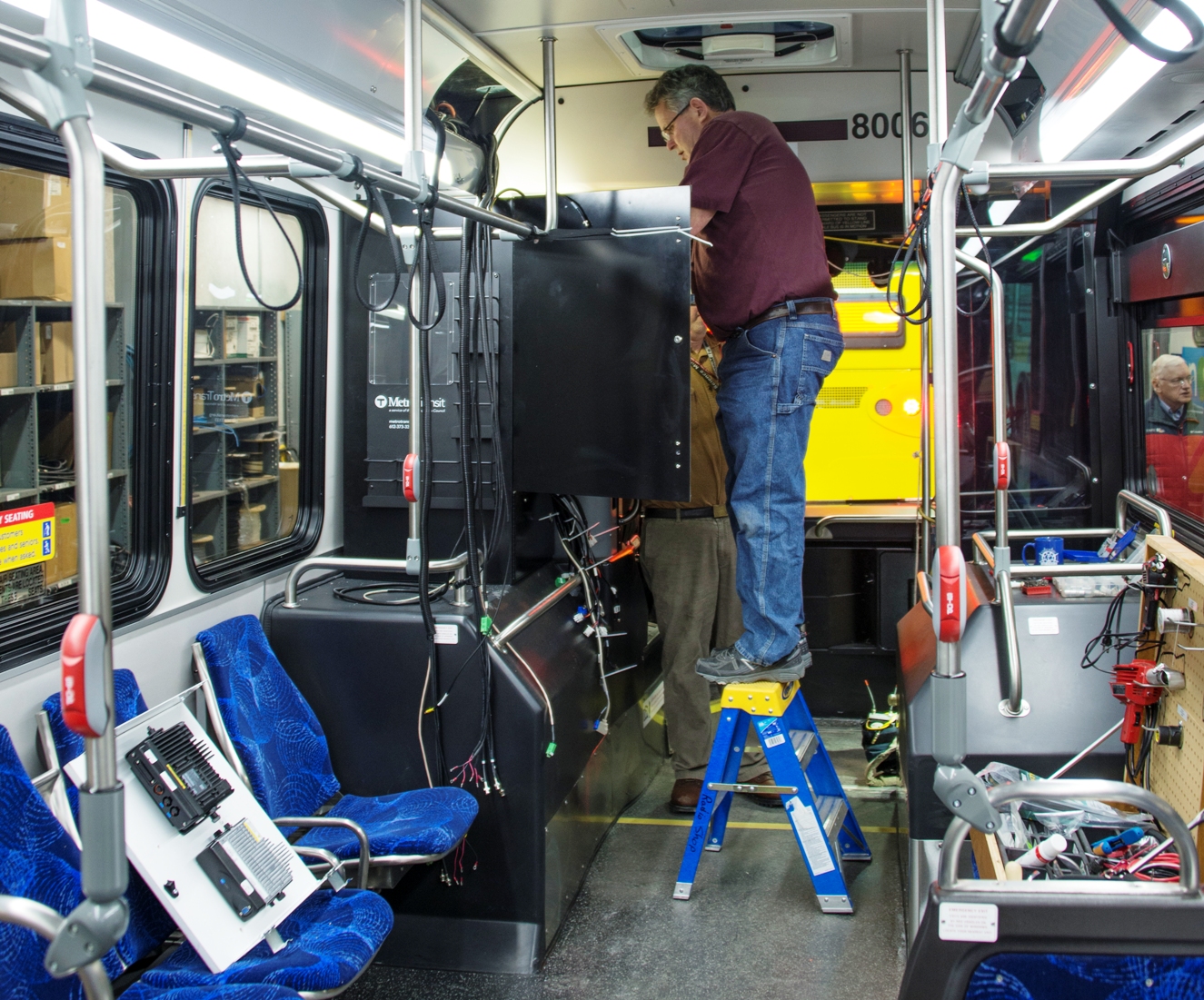 When Ed Anstett began at Metro Transit 36 years ago he was among four people who maintained the radios that had just been added to buses, providing a lifeline for operators who before that had nothing to rely on but payphones.
When Ed Anstett began at Metro Transit 36 years ago he was among four people who maintained the radios that had just been added to buses, providing a lifeline for operators who before that had nothing to rely on but payphones.
Like the technology Anstett works with, the job has evolved quite a bit over the years.
Operators still use radios to communicate mechanical or service issues they encounter on the road. But Anstett and other Electronic Repair Techs in Metro Transit’s Radio Shop now maintain several other pieces of equipment that have turned buses into advanced mobile computers with up to a mile of wiring neatly tucked out of sight.
Today, buses include GPS and video-storage equipment, devices that count each customer boarding and exit and hardware that allows buses in designated corridors to request a green light or enter an area with restricted access.
While there once were hand-cranked destinations signs, there are now LED displays on both the inside and outside of the bus; a system that automatically announces bus stops and transfer points was also recently expanded fleet-wide.
“When we started, you just had to know a little bit about radios and that was it,” said Anstett, who came to Metro Transit after working for the company that installed the first radios. “There’s much more to jump into now than there used to be.”
The latest technological evolution came last year, when Electronic Repair Techs installed equipment on nearly 750 buses that allows data to be transferred more quickly and efficiently.
The Onboard Mobile Gateways, or OMGs, are particularly useful when routes or schedules change since updates can be sent automatically instead of having to be manually entered on each bus. The OMG equipment is also used to provide WiFi, which was piloted on some buses beginning in 2015.
For techs like Anstett, the day begins early with a list of work orders outlining issues that need to be addressed. Most of their time is spent on the road traveling to garages or other locations in a fleet of meticulously-stocked vans.
When not at a garage, Techs repair equipment at the Radio Shop, replace outdated equipment and outfit each new bus with the technology it needs to go into service. They are currently focusing on the new Bus Rapid Transit buses that will be used on the A Line opening this year.
“Every new bus that comes in, comes to us first,” Radio Shop Supervisor Scott McDonald said.
In addition to this work, techs maintain portable radios used by Transit Police, Rail and Street supervisors, work on light-rail and non-revenue vehicles and maintain six radio towers located around the region.
While the work often goes unseen, Anstett said he’s found motivation from knowing he’s doing a public service and from being regularly challenged by the glitches that inevitably arise.
“It’s using your mind — you against the machine,” he said during a recent trip to South Garage, where he fixed a bus that wasn't tracking correctly. “It’s someone saying, ‘Here’s the problem: solve it.’ I’ve learned a lot over the years and that’s what’s made the job fun.”
Techs can expect to do even more problem-solving in the years ahead as technology continues to evolve and expand.
“We never could have imagined being where we are now,” said McDonald, the supervisor. “But the sky’s the limit. Things are getting smaller and faster and as everything moves in that direction we will too.”
> KARE 11: New Metro Transit BRT buses unveiled